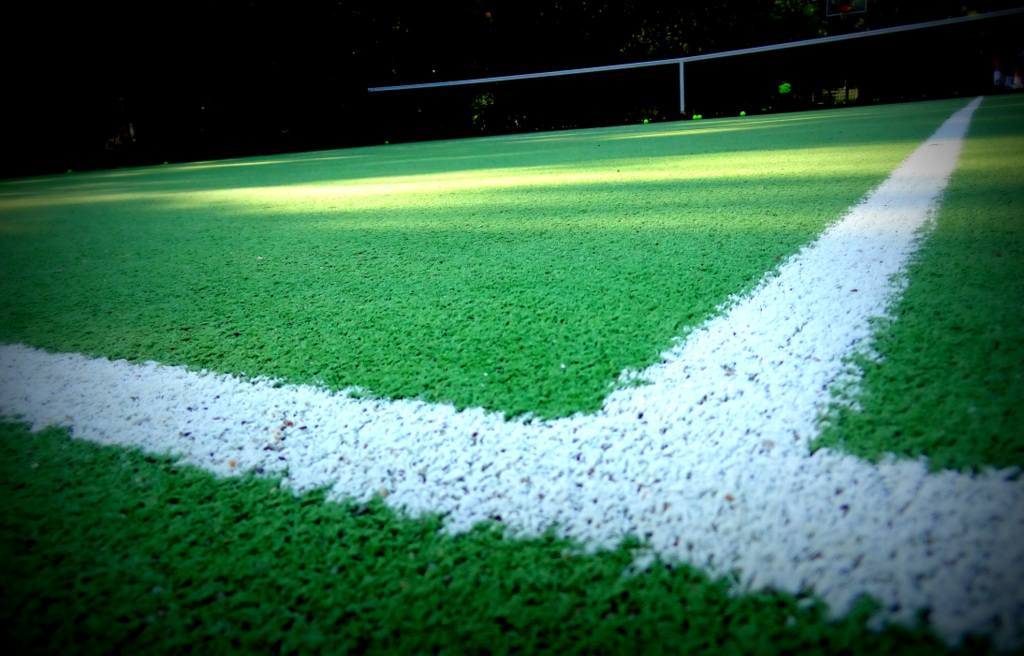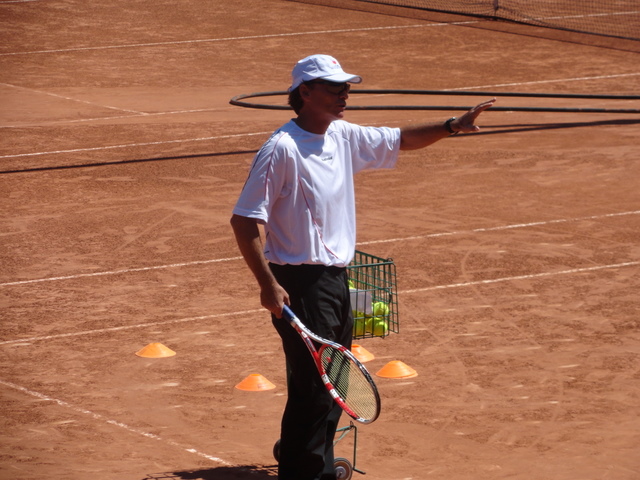1. PLAY DEEP SHOTS WITH HEAVY TOPSPIN AND, SLICE TO KEEP THE OPPONENT BACK ON THE COURT.
GOAL: TESTING HIS/HER OVERALL CONSISTENCY SHOT TOLERANCE AND MOVEMENT, ALSO TECHNIQUE! VERY GOOD TACTIC EARLY IN MATCHES!
2. ISOLATE OUR SHOTS BY HITTING ONLY TOWARDS ONE SIDE (E.G. BACKHAND)
GOAL: TO TEST THE OPPONENT CONSISTENCY OVER THAT PARTICULAR SIDE, AND ALSO TO CREATE OPENINGS ON THE OTHER SIDE OF THE COURT.
3. PLAY 2 OR 3 SHOTS TOWARDS ONE SIDE (EITHER FOREHAND OR BACKHAND) AND, THEN CHANGE THE DIRECTION BY HITTING TO THE OTHER SIDE OF THE COURT.
GOAL: TO MOVE THE OPPONENT AROUND AND ALSO CREATE OPENINGS FOR WRONG FOOT SHOTS OR DROP SHOTS AS WELL.
4. PLAY DEEP SHOTS AND LOOK FOR THE OPPORTUNITY TO BRING THE OPPONENT FORWARD BY HITTING A SHORT BALL.
GOAL: TO FORCE THE OPPONENT TO MOVE FORWARD AWAY FROM BASELINE, TESTING HOW THEY MANAGE THIS PLAY, AND OF COURSE MAKING THEM RUN, CREATING OPENINGS ON HIS/HER SIDE OF THE COURT.
5. APPLY RELENTLESS PRESSURE USING YOUR FAVORITE SHOT
GOAL: TO LOOK FORWARD TO SET UP THE POINTS UTILIZING THE MAJORITY OF TIME YOUR FAVORITE SHOT. (E.G.) FOREHAND, OR MAYBE BACKHAND CROSS COURT/BACKHAND DOWN THE LINE PATTERN. CONTROLLING THE CENTER OF THE COURT.
6. PLAY A RELENTLESS DEFENSE AND LOOK FOR THE OPPORTUNITY TO COUNTER ATTACK RAPIDLY.
GOAL: AGAINST A SUPERIOR OPPONENT, JUST TRY TO STAY ON THE POINT NEUTRALIZING HIS/HER POWER, BUT BEING ALSO OPPORTUNISTIC WAITING FOR THE RIGHT TIME TO HIT BACK AGGRESSIVELY.
7. UTILIZE THE INSIDE OUT FOREHAND TO PUT PRESSURE ON THE OPPONENT’S BACKHAND AND LOOKING FOR THE OPPORTUNITY TO HIT THE INSIDE IN FOREHAND TO FINISH THE POINT. VERY COMMON TACTIC, FOR PLAYER POSSESSING A BIG FOREHAND.
GOAL: TO USE THE FOREHAND TO DICTATE PLAY
8. CREATE OPENINGS BY MOVING THE OPPONENT AROUND, AND THEN MOVING FORWARD TO FINISH THE POINT AT THE NET. THIS TACTIC IS CALL “SNEAK IN ATTACK” OR “DELAYED ATTACK”.
GOAL: TO STE THE POINT WITH THE FINAL GOAL TO SURPRISE THE OPPONENT BY COMING FORWARD AND FINISHING THE POINT AT THE NET.
VERY EFEFCTIVE TACTIC AGAINST COUNTER PUNCHERS.
9. ENGAGE THE OPPONENT IN A CROSS COURT BACKHAND RALLY TO TEST HIS/HER ABILITY ON THAT SIDE.
GOAL: TO OBSERVE HOW SOLID IS THE OPPONENT IN THIS SIDE, AND TO OPEN THE FOREHAND SIDE AS WELL.
ALSO TO SEE WHAT THE OPPONENT TENDENCIES ARE:
- COMMITS AN EARLY ERROR?
- LEAVES THE BALL SHORT OR AROUND THE MIDDLE?
- CHANGE THE DIRECTION TOO QUICKLY?
- RUNS AROUD TO HIT A FOREHAND INSTEAD?
- DO THEY UTILIZE THE SLICE?
10. USE THE SLICE BACKHAND TO FORCE THE OPPONENT TO MAKE ERRORS AND ALSO TO ELICIT WEAK REPLIES TO ATTACK BY UTILIZNG OUR WEAPONS.
GOAL: TO PRODUCE LOW SHOTS TO KEEP THE BALL OUT OF THE OPPONENT IDEAL STRIKE ZONE, FORCING THEM TO HIT UP AND CREATING DISCOMFORT AS WELL.
VERY CLEVER TACTIC AGAINST POWERFUL HITTERS!

